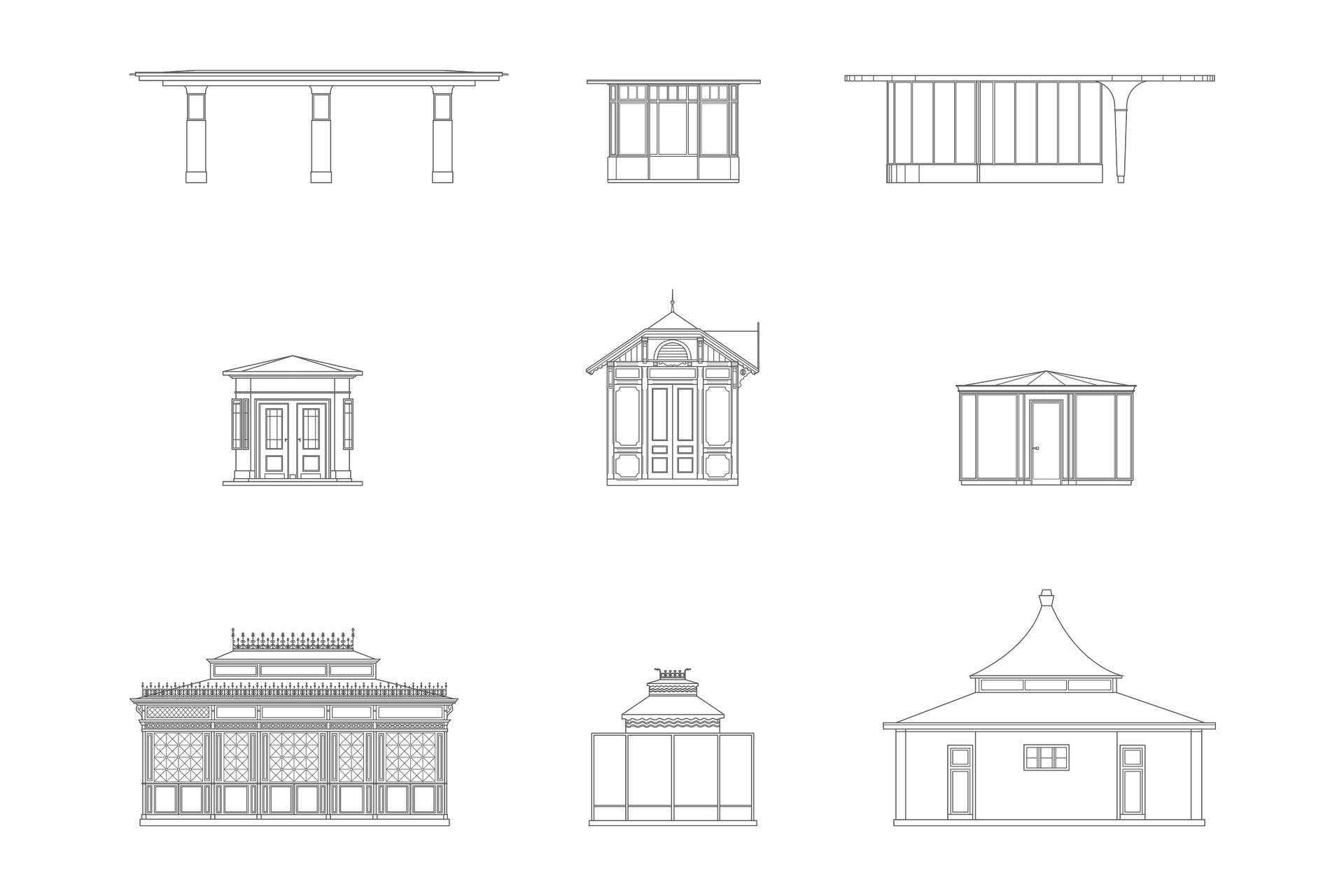10/2021
Small buildings of the city of Vienna
How can an insight into the universe of small buildings in Vienna be generated? How can their “significant trivialities” and their historical development be traced? How can their abundance, diversity, quality and relevance on the basis of a collection of approximately 70 existing passenger shelters, public lavatories and kiosks be demonstrated?
Claudia Lingenhöl
Diploma in Architecture
E251-2 – Denkmalpflege und Bauen im Bestand
Supervisor: Nott Caviezel
Omnipresent and yet often overlooked, the small buildings of the city of Vienna – from kiosks to passenger shelters to public lavatories – are indispensable to the functioning of the city. For over 150 years, these small, solitary buildings have been among the essential components of the city and bear witness to its development. Despite their small size, they shape the urban space. But their inconspicuous size is often their disadvantage. Taken for granted when needed, they lose their raison d’être and have to give way when needs change. At best, they are relocated to a less desirable location, but are thus torn away from their original context; at worst, they get completely demolished.
The aim of this work is to generate insights into the universe of these “significant trivialities” (Lampugnani 2019), to trace their historical development and to demonstrate their abundance, diversity, quality and relevance on the basis of a collection of approximately 70 existing passenger shelters [W], public lavatories [B] and kiosks [K]. Based on this it encourages the concern for the often forgotten, small buildings of the city of Vienna.
As the focus of this research lays on monument preservation, it concludes with an analysis of the current situation with regard to protection, values, difficulties and potentials.
Omnipresent and yet often overlooked, the small buildings of the city of Vienna – from kiosks to passenger shelters to public lavatories – are indispensable to the functioning of the city. For over 150 years, these small, solitary buildings have been among the essential components of the city and bear witness to its development. Despite their small size, they shape the urban space. But their inconspicuous size is often their disadvantage. Taken for granted when needed, they lose their raison d’être and have to give way when needs change. At best, they are relocated to a less desirable location, but are thus torn away from their original context; at worst, they get completely demolished.
The aim of this work is to generate insights into the universe of these “significant trivialities” (Lampugnani 2019), to trace their historical development and to demonstrate their abundance, diversity, quality and relevance on the basis of a collection of approximately 70 existing passenger shelters [W], public lavatories [B] and kiosks [K]. Based on this it encourages the concern for the often forgotten, small buildings of the city of Vienna.
As the focus of this research lays on monument preservation, it concludes with an analysis of the current situation with regard to protection, values, difficulties and potentials.
Diploma in Architecture
E251-2 – Denkmalpflege und Bauen im Bestand
Supervisor: Nott Caviezel
